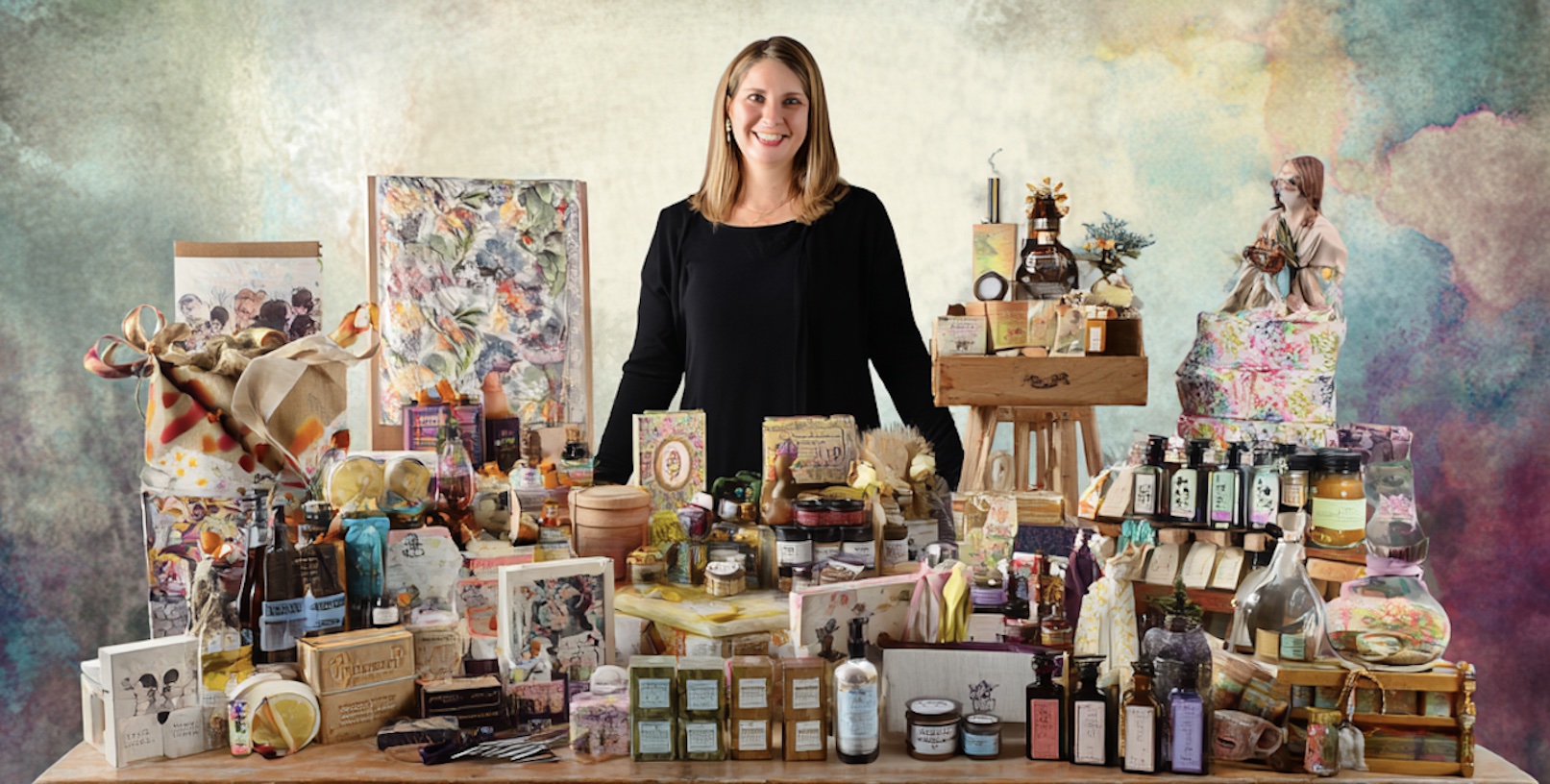Many startup and small business owners struggle to increase their revenues because they don’t know how to quickly and cost effectively increase the quality and variety of products they sell. Merchandise is a tried and true way to earn more for almost every business you own.
And it is important to realize that you don’t need to be a designer or an artist to sell great merch. With properly licensed art, anyone — coaches, creators, podcasters, authors, and service providers — can quickly launch products that look professional and sell well.
Whether you’re creating t-shirts, mugs, journals, or posters, the key is understanding how to source art legally, apply it creatively, and get products to market fast.
Tip: Even if you have your own logos, patterns, and illustrations you’ll find you need to license at least some content from others in order to create an attractive and easy-to-sell product. It’s illegal to use fonts you find and download from the internet in work you want to incorporate in products (toys, book covers, calendars, housewares, clothing, etc).
Disclaimer
Do not rely on this site, or the information provided here, for legal advice. This information provide here is meant to review fundamentals, not provide in-depth information on the legalities of all possible licensing issues, options, and possible stumbling blocks. Business owners are best served when they seek out legal advice as required to ensure they merch they create is legal to sell.
Why Use Licensed Art?
There are lots of very full featured and easy to use platforms filled with millions of licensable works you can use to create products online. They give you:
- Instant access to high-quality visuals without spending months creating them from scratch.
- Legal protection (if you follow the license terms).
- Faster time to market — ideal for testing product ideas or responding to trends.
Using them a smarter, safer alternative to “borrowing” art from Google or social media, which can get you sued or banned from platforms like Amazon, Etsy, and Redbubble.
Tip: Just putting words like “borrowed” or “fair use” on merch you sell can be a very expensive mistake. Incorporating the Coca Cola logo, Darth Vader, or Iron Man into a T-Shirt design is likely to introduce you to a significant number of attorneys. Big companies take protecting their intellectual property very seriously. And this attitude extends beyond images, to fonts, song lyrics, and poems. Why? Because if they do not aggressively protect what they own, it loses much of its value.
Step 1: Choose the Right Licensing Source
Before you purchase a license, find a trustworthy platform that sells art with clear commercial rights.
Top sources for licensed art include:
- Creative Fabrica
- Design Bundles
- TheHungryJPEG
- Pond5.com
Look on the site, and in its purchase Terms and Conditions specifically, for terms like:
- Commercial use allowed
- Print on demand (POD) friendly
- Full license included (not just personal use)
Avoid any source that:
- Doesn’t clearly explain licensing terms
- Offers files from unknown or unverifiable creators
- Requires attribution unless you’re comfortable giving credit on every product
Make sure, when you purchase a license for use in merch that the terms and conditions of the license specifically say you can use what you are using in POD products. When in doubt, contact the support team for the site to ask if your planned use is legal under the license you want to buy and/or contact an attorney to review the terms and let you know.
Step 2: Check the License Terms
Before you license art:
- Confirm whether you can sell products with the design
- Check if modification to what you license is required (some licenses prohibit selling the image “as-is”)
- Understand platform-specific limits (e.g., some art may be used on Etsy but not Amazon)
Print and keep a copy of:
- Your receipt or invoice
- The license agreement at time of purchase
- A screenshot of the listing page, just in case it’s changed or removed later
Companies like Amazon may demand this information at any time, and without it they may remove your product from their store. You are responsible for proving you have the right to use the artwork commercially.
Step 3: Design the Merchandise
Use design tools like:
- Canva Pro (perfect for creating many like books, journals, stationary, etc)
- Photoshop or Illustrator (for advanced control of artwork, higher resolution products, and layered files)
- Affinity Designer (a cost-effective one-time purchase alternative)
Quick product ideas:
- Quotes + licensed background for framed prints or t-shirts
- Licensed characters with added text for greeting cards or stickers
- Patterns or seasonal art on mugs, tote bags, or phone cases
- Your podcast or brand logo plus licensed textures or frames for hats or notebooks
Follow good print design rules:
- Use high-resolution images (300 DPI or higher)
- Keep text readable and well-contrasted
- Export your final designs in PNG (transparent) or PDF format, depending on your printer
Step 4: Upload to Print-on-Demand Platforms
Use POD platforms that handle printing, shipping, and customer service for you. Popular options:
- Redbubble
- Printful
- Zazzle
- TeePublic
- Amazon
- Lulu
- and more
Each platform:
- Has different royalty rates and audience reach
- May have file dimension requirements for different products
- Will flag or ban designs if licensing is unclear — so keep your receipts and licenses
Create simple product descriptions, focus on a few categories, and test what sells best.
Step 5: Market Your Products
- Share on social media with behind-the-scenes insights or themed collections
- Feature limited-time drops to create urgency
- Bundle with your services (e.g., a client onboarding gift box, or merch as part of a course)
- Promote via email to your audience with personal stories or reasons behind the design
And if you’re speaking or exhibiting at an event — bring physical samples or offer QR codes to your shop.
What About Tariffs, Trade Disruptions, and Shipping Risks?
If you’re selling physical merchandise — especially items printed and shipped internationally — geopolitical factors matter more than you think.
Here’s why you need to be aware of global risks:
1. Tariffs Can Increase Product Costs Overnight
- U.S. tariffs on goods from China, for example, can raise your base product cost by 10–25% or more — erasing your margins.
- Some platforms pass those fees onto sellers or buyers; others simply become less competitive due to rising costs.
2. Trade Wars Can Disrupt Supply Chains
- A t-shirt manufacturer in one country may suddenly lose access to inks, fabrics, or printing equipment sourced elsewhere.
- Your chosen POD provider may experience delays or limit product types due to sourcing issues.
3. Shipping Delays Kill Customer Satisfaction
- International instability (like war, embargoes, or port strikes) slows deliveries, especially during holidays.
- Expect higher refund requests and lower ratings if customers don’t receive their orders on time.
4. Platform Risk Increases
- If you rely solely on a marketplace that sources overseas (e.g., Redbubble or Teespring), your entire business may suffer if those suppliers are cut off or sanctioned.
- Some platforms may remove products or shut down shops to avoid legal liability during unstable trade periods.
How to Protect Your Merch Business from Global Risk
- Use POD vendors with domestic fulfillment centers whenever possible. Printful, for example, offers U.S.- and EU-based fulfillment.
- Offer digital versions of your products as backups — such as downloadable prints, planners, or coloring pages.
- Price for flexibility. Don’t operate on razor-thin margins if your costs could spike.
- Build your own email list so you’re not dependent on one platform or vendor to reach your customers.
- Stay informed about major trade and shipping developments if your business depends on physical inventory.
In uncertain economic times, agility and redundancy are more valuable than ever.
Final Thought
You don’t need to be an artist to create beautiful, branded, sellable merchandise. With properly licensed art and smart tools, you can create products that reflect your voice, attract your audience, and generate real income — fast.
Just remember: license before you launch, and plan for the real-world logistics that come with selling physical goods. Your creativity is the spark — but your business model is the engine.
Would you like a downloadable PDF version of this article or a slide deck version you can use in a workshop or event? I can create those next.



